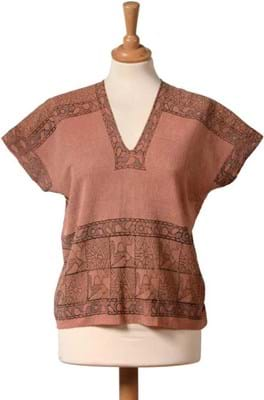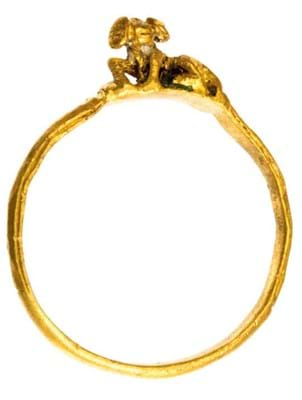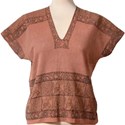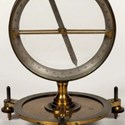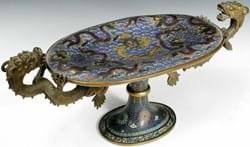Designs spanning four centuries are going under the hammer in a sale of vintage costume, textiles, dolls and teddy bears at Tennants of Leyburn in North Yorkshire on August 12.
Two garments from the 1920s designed by the Californian eccentric Raymond Duncan (1874-1966) are expected to generate interest from US bidders.
A dancer, artist, designer, poet, craftsman and philosopher, Duncan was fascinated with ancient Greece, and was a fervent advocate of classical dress, believing it to be beneficial to health. He designed textiles loosely based on Hellenic costume.
A crêpe tunic top is estimated at £400-600, while a crêpe panel carries hopes of £600-800.
tennants.co.uk or see this item on thesaleroom.com
This Renaissance ring topped with a Lamb of God symbol is among several distinctive gold examples consigned to Hansons’
August 23 sale in Derbyshire.
It is estimated at £1200-1500.
The sale will also include a trio of 17th-18th century posey rings (£600-1200) and a 13th century medieval gold ring set with a cabochon blue sapphire (£1500-2000).
Used to measure the angle between the horizon and the Earth’s magnetic field, this late 19th century brass magnetic dip circle is priced at £1100 from Hatchwell Antiques on the King’s Road in London.
With a 7in (18cm) dial, it was made and marked by John Joseph Griffin (1802-77) of Long Acre in London.
The instrument was useful in surveying, mining and prospecting as well as for the demonstration and study of magnetism.
An example of Byzantine opus interrasile goldwork is evident in this pair of half-moon earrings priced at £875 from CJ Martin Ancient Art in London.
The technique, in which designs were traced onto sheets of gold, then punched with holes of various sizes to highlight the pattern, was used by goldsmiths to make jewellery from the 3rd-10th centuries.
The patterns encouraged the play of light and shadow across an object’s surface. The earrings, which date to the c.6th-8th centuries and feature dark blue glass beads, had resided in a collection of jewellery formed by a London collector in the 1970s.


